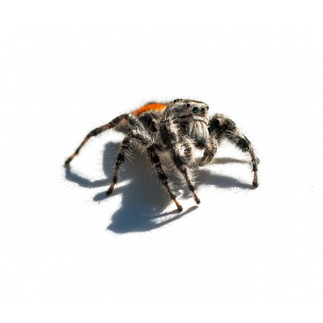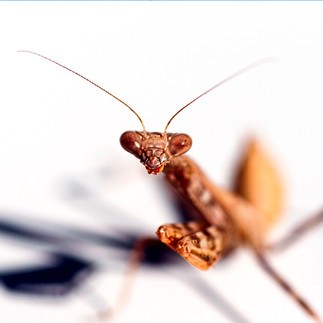
Do you love nature? Do you love photography? If so, then you're going to love this blog post! In it, I will be discussing some of the most intelligent insects that can be found near camera equipment. These creatures have learned to take advantage of the cameras and photographers who are trying to capture their beauty. Some of them even seem to enjoy the attention!
You wouldn't think of using the word intelligent when referring to insects, but there have been many studies on just how smart insects can really be. At the top of the intelligent list are Honey Bees, Ants, Spider Wasps, Mantis, and Spiders (yes, I know spiders are not insects they are arachnids). The first three of these insects are even smart enough to avoid people, and it's next to impossible to have them stay still for a photo, but Praying Mantis and certain spiders have been known to be curious enough to stay still for a photo and even seem to pose in some cases.
All the insects I photograph start out alive and go about their merry way alive after the photo. But some insects either are too active or too poisonous to work with to get a good photo. To help with the photo process, I place the insects in the refrigerator for a few minutes to slow them down enough to be photographed. This process especially helps with flying insects. Some insects like grasshoppers and scorpions need to stay in the fridge for a good 20 minutes to do the trick. As for the Jumping Spider and Praying Mantis I never had the need to place these two insects in the fridge. They seem to be intrigued by me enough to hang around. It may also be the handout as well.
One subject I had was a Jumping Spider I found wandering on my back deck. As soon as I noticed him I ran into the house for my white paper plate and camera gear. Luckily he was still in the same spot when I got everything set up. Usually, I place my subjects in a plastic container to get an idea of how the photo shoot would go, and whether they would need to be placed in the fridge. In this case, there was no need for a container or fridge. The spider jumped on my hand and stayed there. I coaxed him off my hand and onto the paper plate, then used my finger to try and get him to face the lens. It seemed like it wanted to explore a bit by jumping on and off the camera lens. After about 5 minutes it remained in the designated spot long enough for me to get a good amount of photos. During this time it seemed to tilt its head like a curious dog, showed me its fang, and even laid down for a rest. For his trouble, I gave him a housefly to snack on.
Did you know: A jumping spider's brain is about the size of a sesame seed.
In another instance, I was in the front yard and noticed a young Praying Mantis on a flower. She stayed in place long enough to get some good photos and that was it or so it seemed. Every time I walked by the flowers I would see the same Mantis swaying back and forth. Once the flowers died off it moved to the hedges along with the house. This mantis stayed in the same area for over six months. Over that time period, I was even able to get it to take mealworms from me. I was able to see and photograph the mantis grow through its whole life cycle. About a month after my last photo session with the praying mantis I noticed a few dozen babies around the same flowers, but none of those stuck around.
A few years later I came across a large male Praying Mantis in my backyard. He had nothing to do with me trying to get him on the plate for a photo session. I broke out the mealworms and teased him over to the plate. He did go onto the plate but took his gift and climbed into the shrubs to eat it. I went out the next day and he was still in the same bush. I put down the paper plate and did the same thing with the mealworm, but this time left him alone to see what he would do. Unfortunately, a small bird took his meal and at the same time made him go into hiding. The next time I stayed outside to guard against freeloading birds. If you are going to take the food you need to stick around for a photo. For a few weeks, he would come down for the mealworm to do a few poses then climb back into the bushes. After that, he never showed up for work again.
Did you know: Praying Mantis can see in 3-D
The photographs contained in this website may not be reproduced without the express consent of Shutter Bison.


























Comments